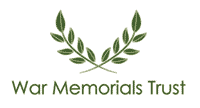

Why are war memorials important?
War memorials are monuments or objects which commemorate those who served and died in conflict. Generally memorials are erected by local communities or groups associated with those remembered such as Regiments, Companies, social clubs or Churches.
Each memorial is unique. It represents that community’s chosen method of remembrance whether it be a cenotaph, plaque or more utilitarian example such as a bus shelter or hospital. The names of those recorded on a memorial may only be remembered on that monument making it important to preserve it to commemorate that individual’s sacrifice.
These memorials are important because they act as historical touchstones. They link the past to the present and enable people to remember and respect the sacrifice of those who died, fought, participated or were affected by conflict(s). Who is recorded varies with communities making their own decisions. Often local memorials will contain the names of families still living within that community or as communities change offer an insight into the history of an area.
New memorials, to both past and present conflicts, continue to be erected representing the ongoing importance of memorials. Some communities choose to make additions to existing memorials thereby ensuring the continuing relevance of those memorials for local remembrance.
Memorials represent a focal point for remembrance both individual and collective particularly on occasions such as Remembrance Sunday or anniversary events. The sacrifices made by so many for our freedom need to be remembered and war memorials play a vital role in ensuring that continues.
Additionally many war memorials are important to the country’s architectural and artistic heritage. After the First World War, many commissions for the design of war memorials went to established practitioners and architects like Sir Edwin Lutyens, Sir Reginald Blomfield, and sculptors like William Reid Dick, Sir George Frampton and Albert Toft. Some younger architects and sculptors also came to the fore and excelled like Lionel Budden, Walter Marsden, Gilbert Ledward, Tyson Smith and C S Jagger, laying the foundations for successful and distinguished post-war careers. This huge public art project remains a unique event as towns and villages across the UK expressed their emotions at the end of war, relief, sorrow or celebration of victory, in a public sculpture and art project of huge diversity.
